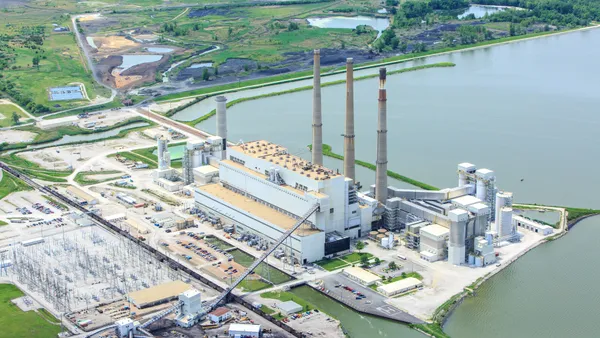Dive Brief:
- The Federal Energy Regulatory Commission should reject Alabama Power’s plan to buy an 895-MW, gas- and oil-fired power plant from Tenaska because it raises market power concerns, according to Public Citizen and other groups.
- If FERC doesn’t reject the application for the $622 million deal, the agency should direct Alabama Power and Tenaska to submit a “horizontal competitive analysis screen” to assess whether the utility and its affiliates could exert market power by buying the Lindsay Hill power plant, Energy Alabama, the Greater-Birmingham Alliance to Stop Pollution and Public Citizen said in a joint protest filed at FERC on Friday.
- The companies should also be required to show that ratepayers wouldn’t be hurt by Alabama Power, a Southern Co. subsidiary, potentially subsidizing affiliated companies through the transaction, the groups said.
Dive Insight:
FERC on Monday proposed allowing communications between agency staff and the Department of Justice’s Antitrust Division so they could discuss Alabama Power’s plan to buy the Lindsay Hill power plant near Billingsley, Alabama, from two Tenaska subsidiaries.
Output from the power plant is under contract to Mercuria Energy America via a power purchase agreement that expires April 30, 2027. Alabama Power said it intends to honor the contract.
Alabama Power expects to close on the deal before October, Southern Co. said in an Oct. 31 filing with the U.S. Securities and Exchange Commission. The Alabama Public Service Commission is reviewing the proposed deal, which Alabama Power said it expects will raise typical residential electricity bills by $3.80 a month.
Energy Alabama, GASP and Public Citizen contend that this planned acquisition comes as Alabama Power has been consolidating control over generation in the state. If the Lindsay Hill purchase is completed, Alabama Power would have bought and built power plants, or entered into PPAs, totaling about 3,400 MW in the last five years, according to the groups. The utility currently controls nearly 12,950 MW, they said.
“Alabama Power’s systematic acquisition of large generating facilities — and by extension, Southern Company’s consolidation of generating capacity in the region — is especially concerning given the size of the [Southern Co. balancing authority area,]” which includes about 61 GW, the groups said.
If FERC determines that adding the Lindsay Hill power plant to Alabama Power’s generation fleet would harm competition in the Southern Co. balancing authority area, the agency should assess whether new market mitigation measures are needed to prevent Southern Co. utilities from exerting market power, according to the groups.
In their Dec. 9 application at FERC, Alabama Power and Tenaska said the planned deal “will not result in any adverse effect on competition, rates, or regulation and will not result in any cross-subsidization.”
Alabama Power’s planned purchase of the Lindsay Hill power plant grew out of a request for proposal process that started in 2023, the utility said when requesting approval for the deal from the Alabama PSC. The RFP was driven by Alabama Power’s most recent integrated resource plan, which showed the utility faces a nearly 1,180-MW shortfall in the resources it needs to meet a 25% reserve margin in 2029, according to the filing with the PSC.
In response to the solicitation, Alabama Power received nine proposals from four bidders, the utility said. Ultimately, the utility considered two offers, both from Tenaska: buy Lindsay Hill or enter into a PPA for its output. The utility said buying the power plant was the less expensive option.
The Lindsay Hill power plant started operating in 2002. The plant’s output has been under contract to Mercuria, an energy marketer and trader, since then. It is next to Alabama Power’s Central Alabama generating station, which the utility bought from Tenaska in 2020. Alabama Power expects it will be able to save money by owning adjacent power plants.
Editor’s note: This story has been updated to include FERC’s proposal to allow talks between its staff and DOJ.














